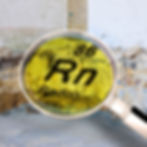Is Radon a Risk in Your Area?
- riverworks8
- Mar 5
- 3 min read
Updated: Sep 22
Radon gas is a silent but serious health risk in many parts of Canada, including the East Kootenay Region of British Columbia. With no smell, taste, or color, radon can go undetected in homes, posing a long-term threat to lung health. If you live in a high-radon area, understanding the risks and taking action is essential to keeping your home and family safe.
Key Takeaways
Radon Gas is a Health Risk: Radon is a naturally occurring radioactive gas that poses significant health risks, particularly as a leading cause of lung cancer in non-smokers.
High-Risk Areas in Canada: Certain regions, such as the East Kootenay Region in British Columbia, have higher radon concentrations due to geological factors.
Detection and Testing: Radon is odorless and invisible, making testing essential. Use radon test kits to determine indoor radon levels and ensure they are below the safe limit of 200 Bq/m³.
Mitigation is Possible: If high radon levels are detected, mitigation techniques such as installing radon mitigation systems, sealing cracks, and improving ventilation can significantly reduce indoor radon levels.
Taking proactive steps to monitor and reduce radon exposure can safeguard your family's health and prevent long-term health risks associated with this radioactive gas.
What Is Radon?

Radon is a naturally occurring radioactive gas that forms from the breakdown of uranium in soil and rock. It seeps into homes through foundation cracks, sump pumps, pipes, and unfinished basements. Over time, radon can accumulate indoors to dangerous levels. Long-term exposure to high levels of radon is the second leading cause of lung cancer—and the #1 cause among non-smokers.
High-Radon Areas in Canada

Health Canada has identified several high-radon zones across the country. Provinces with known elevated radon levels include:
British Columbia (East Kootenay Region, Okanagan, Northern BC)
Alberta (Calgary, Edmonton, Lethbridge, and surrounding areas)
Saskatchewan and Manitoba
Ontario (especially rural and northern communities)
Quebec, New Brunswick, and other parts of Eastern Canada
While radon exists everywhere, some regions have higher levels due to geology and soil composition. The East Kootenay Region, for example, is known for elevated radon levels, with many homes testing above Health Canada’s safe limit of 200 Bq/m³.
How Does Radon Get Into Your Home?

Radon moves through the soil and enters homes through gaps and openings in the foundation. It can seep in through:
✔️ Cracks in walls and floors
✔️ Gaps around pipes and electrical wiring
✔️ Crawl spaces and sump pumps
✔️ Poorly sealed windows and doors in basements
Since modern homes are built to be energy efficient and airtight, radon can become trapped indoors, leading to higher concentrations.
Why Should You Be Concerned?
Radon exposure doesn’t cause immediate symptoms, but over time, it damages lung tissue and increases the risk of lung cancer. According to Health Canada, radon exposure is responsible for approximately 3,200 lung cancer deaths each year. The longer you are exposed to high radon levels, the greater the risk.
The Only Way to Know? Test Your Home!
Because radon is odorless, tasteless, and invisible, the only way to determine if your home is at risk is to conduct a radon test. Testing is simple, affordable, and the first step in protecting your family.
✅ How to Test for Radon:
Purchase a radon test kit – Available online or from radon professionals.
Place the test in the lowest livable area of your home (such as a basement or ground-floor room).
Leave it in place for at least 3 months – Long-term tests provide the most accurate results.
Send it to a certified lab for analysis.
If levels exceed 200 Bq/m³, take action to reduce radon levels.
How to Reduce Radon in Your Home
If your radon test results show high levels, don’t panic—there are effective ways to lower radon concentrations.
✔️ Radon Mitigation Systems – A certified radon professional can install a mitigation system that vents radon safely outside.
✔️ Seal Cracks & Openings – Reducing entry points can help lower radon levels.
✔️ Improve Ventilation – Increasing airflow can prevent radon buildup, especially in basements.
✔️ Use a Heat Recovery Ventilator (HRV) – This can help bring fresh air into your home and reduce radon concentrations.
Take Action Today
If you live in the East Kootenay Region or other high-radon areas, testing your home is the best way to protect your health. Radon exposure is preventable, and taking action today could save lives.
✅ Get a radon test kit
✅ Monitor your home’s radon levels
✅ Take action if levels are high
Have you tested your home for radon yet? Drop a comment below or contact us for more information on how to keep your home radon-safe!
